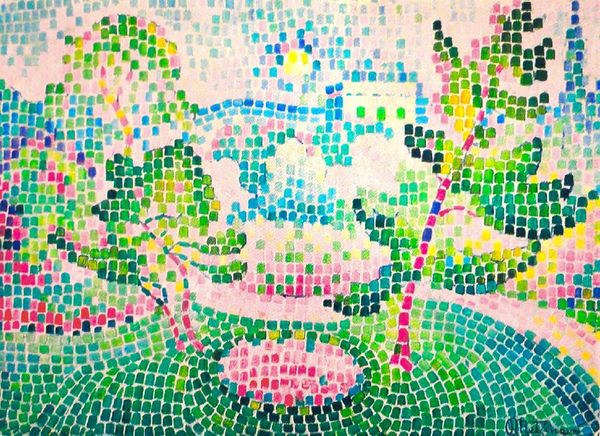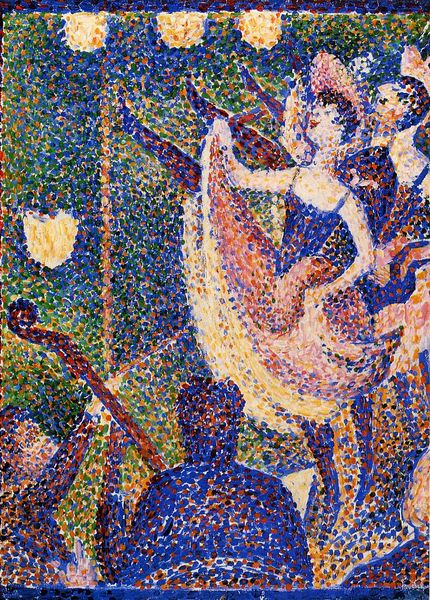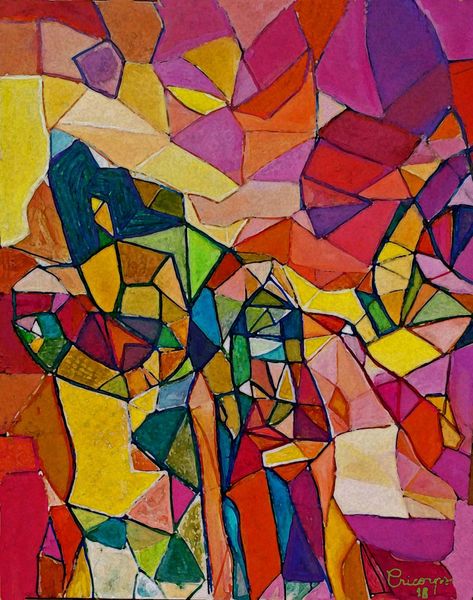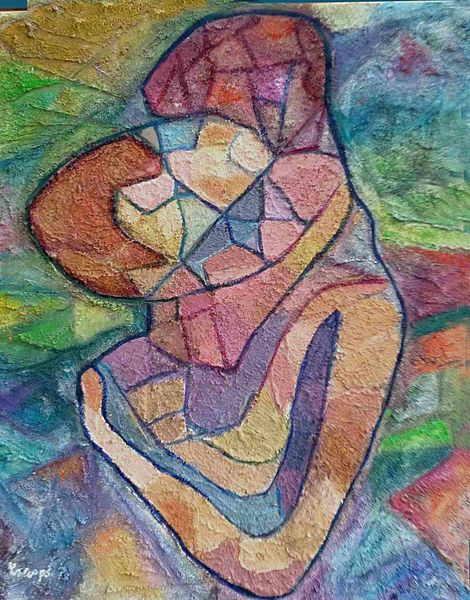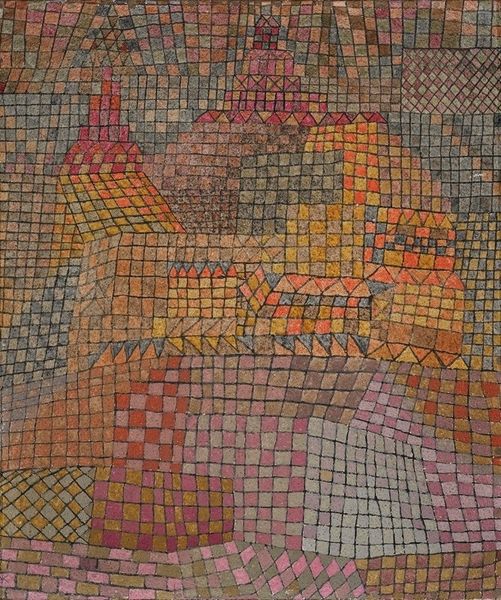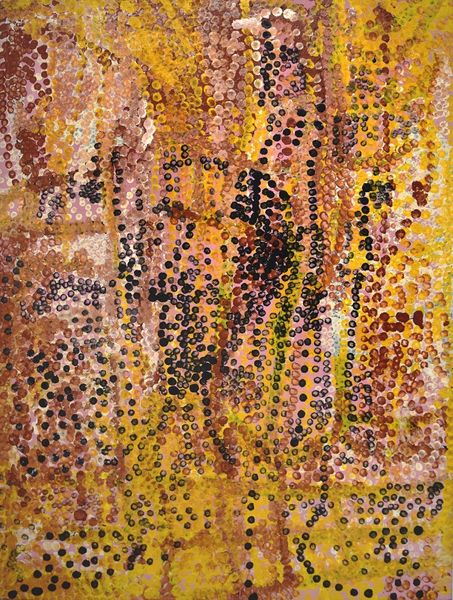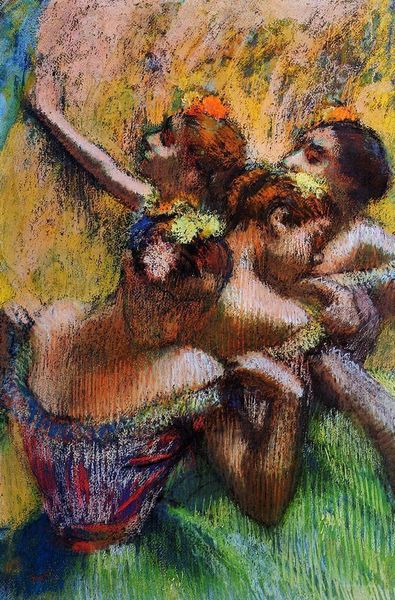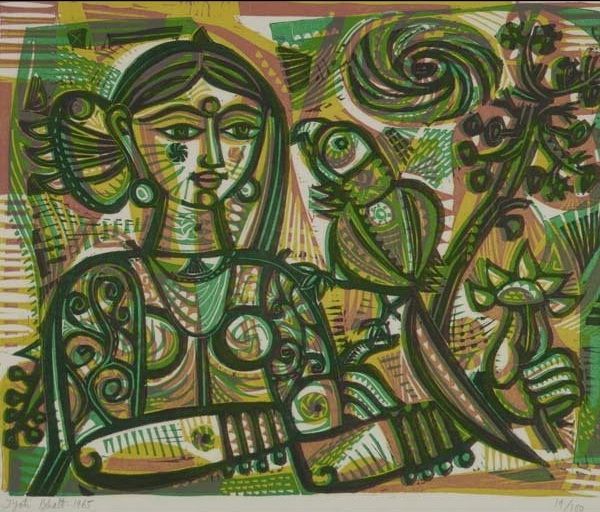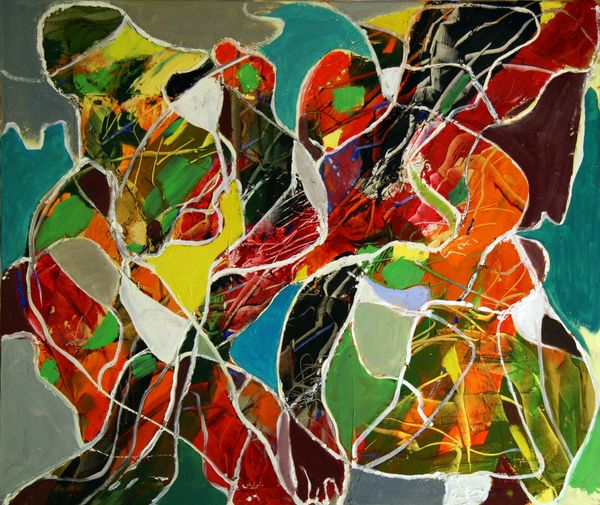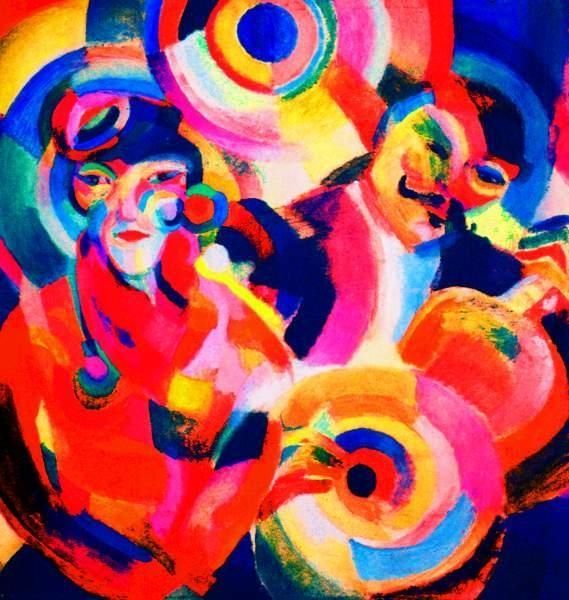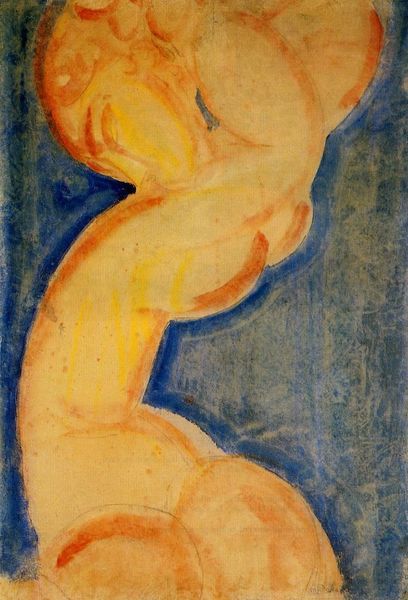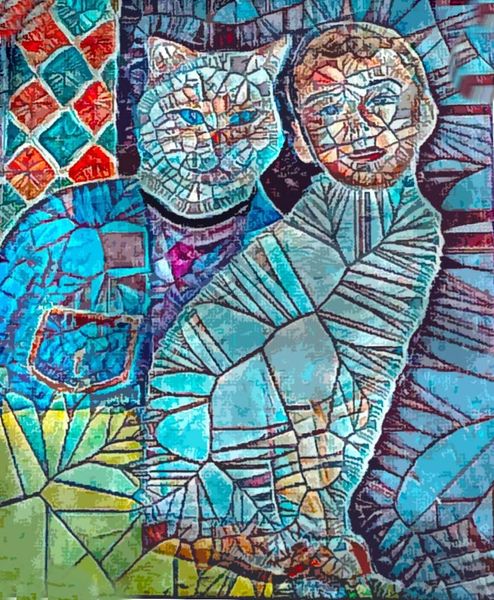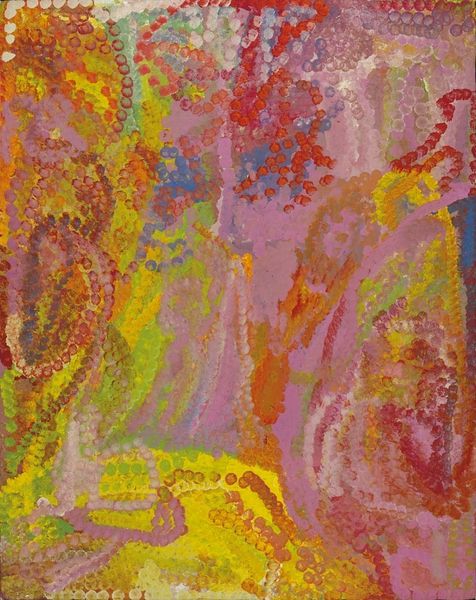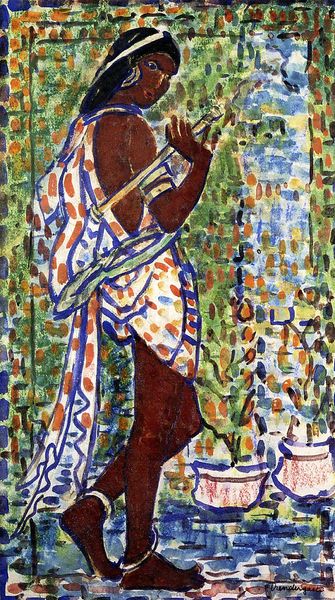
Copyright: Public domain US
Curator: Standing before us is "Bacchante" by Jean Metzinger, completed in 1906. It resides here, at the Kröller-Müller Museum in Otterlo. Metzinger chose oil on canvas to bring this vision to life. Editor: My immediate impression is of a joyful explosion. The fragmented forms and vibrant colors evoke a sense of revelry, even chaos. It’s almost like looking through a stained-glass window. Curator: The title certainly directs our reading. In classical mythology, Bacchantes are the female followers of Bacchus, the god of wine and ecstatic freedom. They are known for wild, often frenzied celebrations. The artist presents a re-imagining of a classical theme through the lens of Post-Impressionism. Editor: The mosaic-like application of color – almost pointillist, but more geometric – reminds me of ancient Roman mosaics. Yet, it feels decisively modern. Is Metzinger connecting us with ancient rituals through this unique method? Curator: Precisely. He uses this visual language to both echo and break from the artistic conventions of the past. This "Bacchante" aligns itself with shifting views on female representation at the time. The theme nods back to a mythological past, but the woman in this scene embodies a turn-of-the-century freedom. The canvas pulses with dynamism, thanks to the deliberate brushstrokes. Editor: What is striking is that this portrayal sidesteps the darker, sometimes violent connotations associated with Bacchantes in their mythological portrayals. While ecstatic, she projects joy rather than fury, standing defiantly with raised hands, embodying a different understanding of liberation. It does pose the question, how do our shifting societal values impact what and how we choose to commemorate from the past? Curator: It reveals how Metzinger appropriates and reimagines these iconic narratives to speak to his present. It underscores the painting's public role: as a dialogue between history and the here and now. "Bacchante" prompts us to question cultural memory and our continuous rewriting of symbols. Editor: It’s remarkable how the mosaic style simultaneously fragments and unites the image, much like memory itself—incomplete, subjective, yet part of a coherent whole. Thank you, a delightful way to look at an artist using his own context to address legacy. Curator: My pleasure. Let's proceed to the next work.
Comments
No comments
Be the first to comment and join the conversation on the ultimate creative platform.
